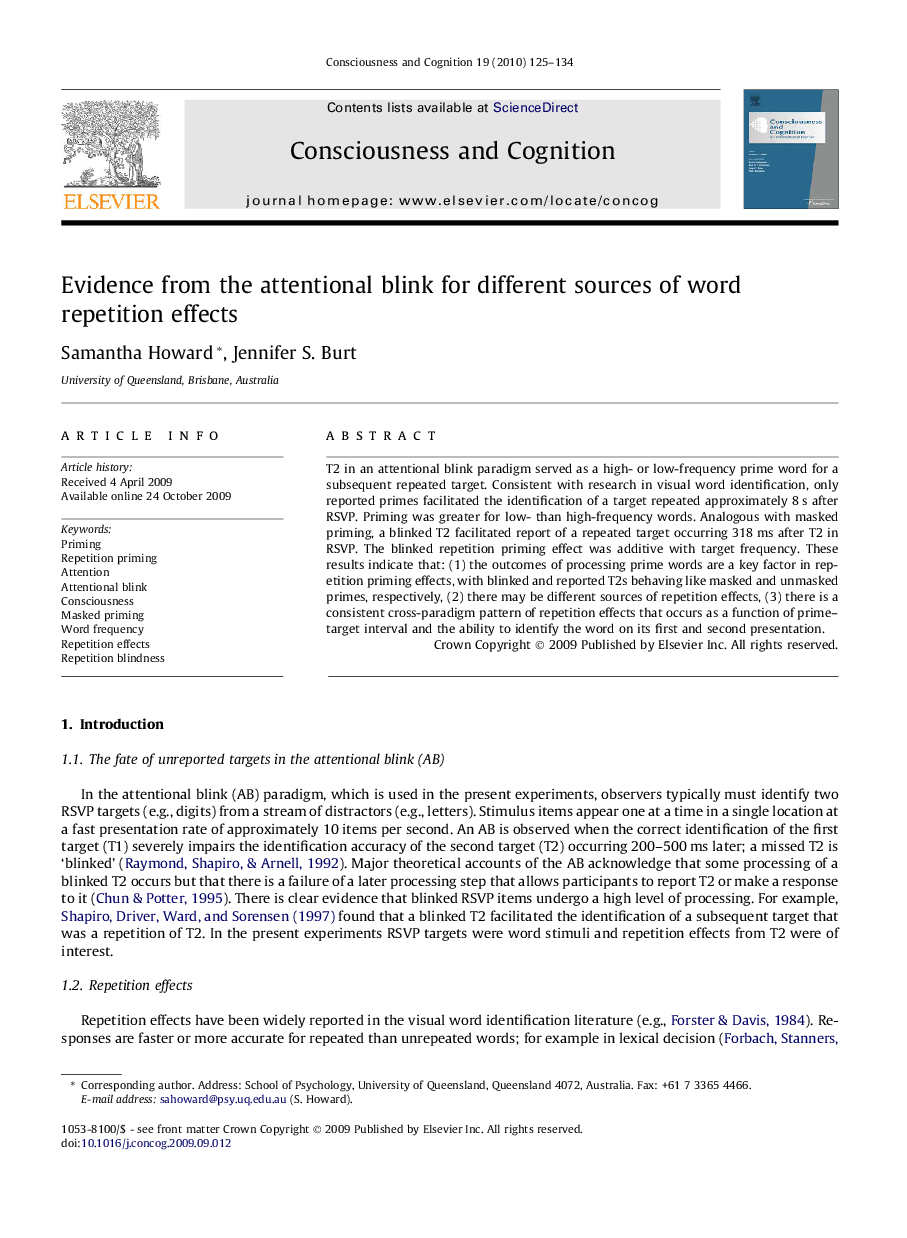| Article ID | Journal | Published Year | Pages | File Type |
|---|---|---|---|---|
| 10458765 | Consciousness and Cognition | 2010 | 10 Pages |
Abstract
T2 in an attentional blink paradigm served as a high- or low-frequency prime word for a subsequent repeated target. Consistent with research in visual word identification, only reported primes facilitated the identification of a target repeated approximately 8Â s after RSVP. Priming was greater for low- than high-frequency words. Analogous with masked priming, a blinked T2 facilitated report of a repeated target occurring 318Â ms after T2 in RSVP. The blinked repetition priming effect was additive with target frequency. These results indicate that: (1) the outcomes of processing prime words are a key factor in repetition priming effects, with blinked and reported T2s behaving like masked and unmasked primes, respectively, (2) there may be different sources of repetition effects, (3) there is a consistent cross-paradigm pattern of repetition effects that occurs as a function of prime-target interval and the ability to identify the word on its first and second presentation.
Keywords
Related Topics
Life Sciences
Neuroscience
Cognitive Neuroscience
Authors
Samantha Howard, Jennifer S. Burt,
